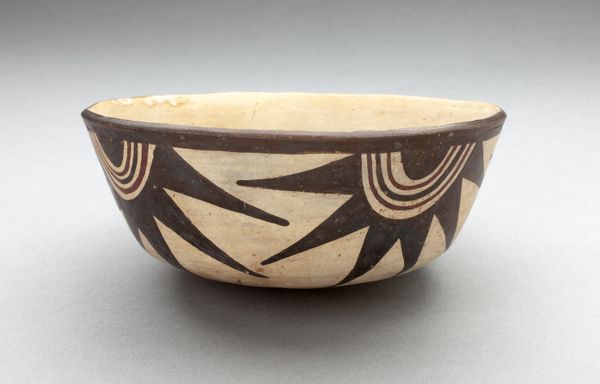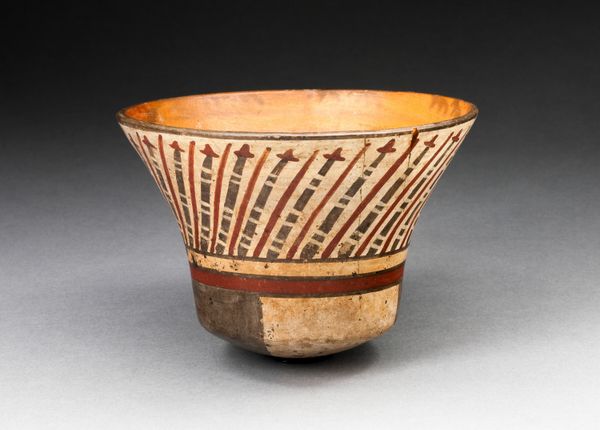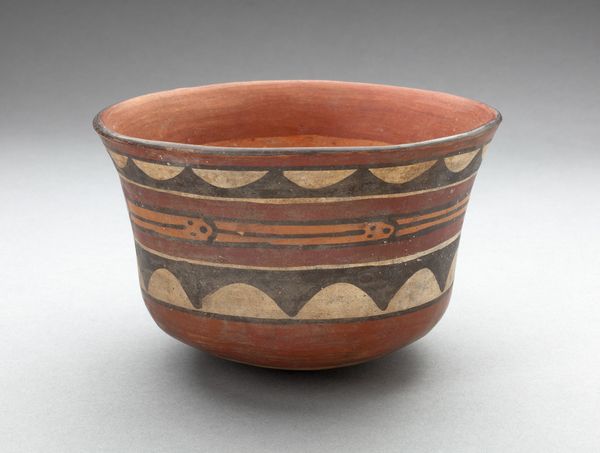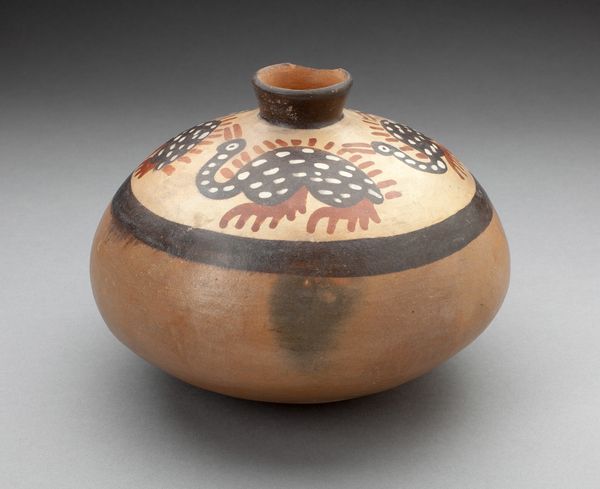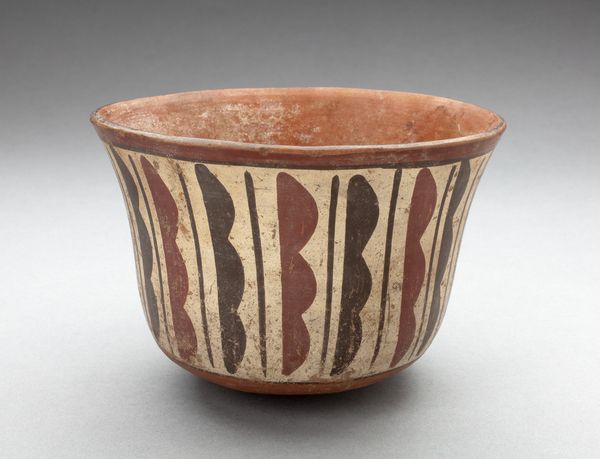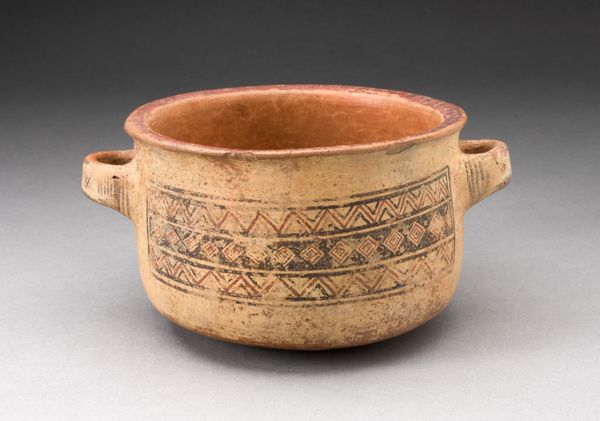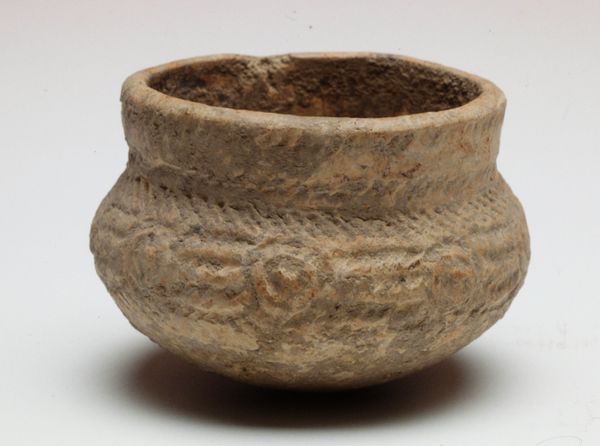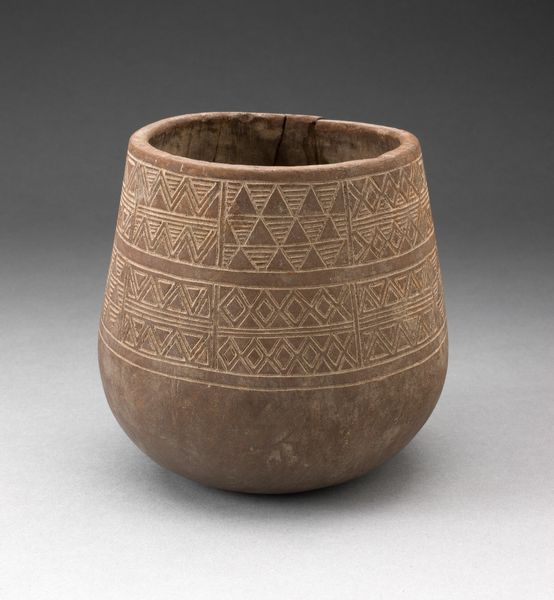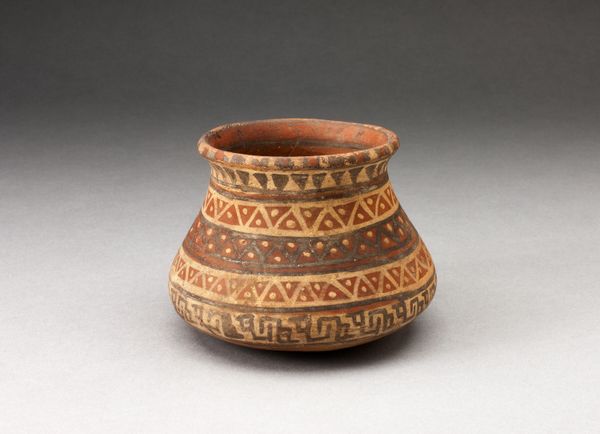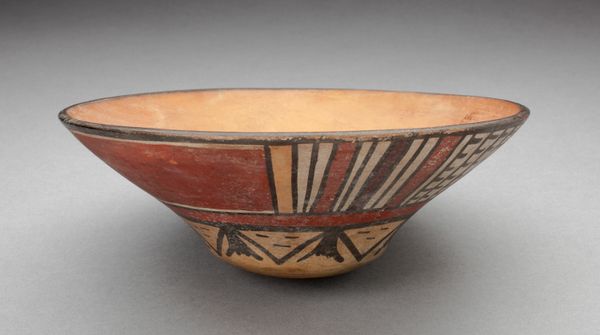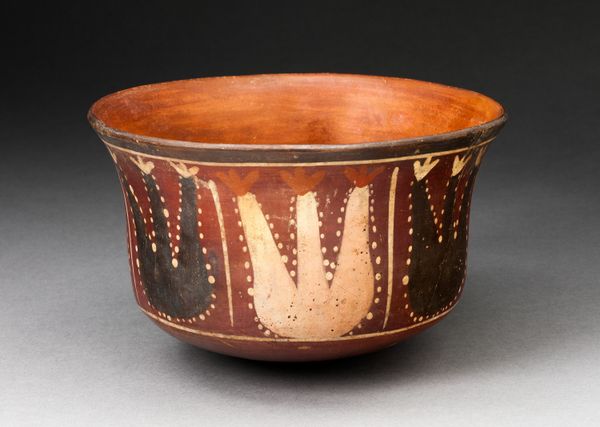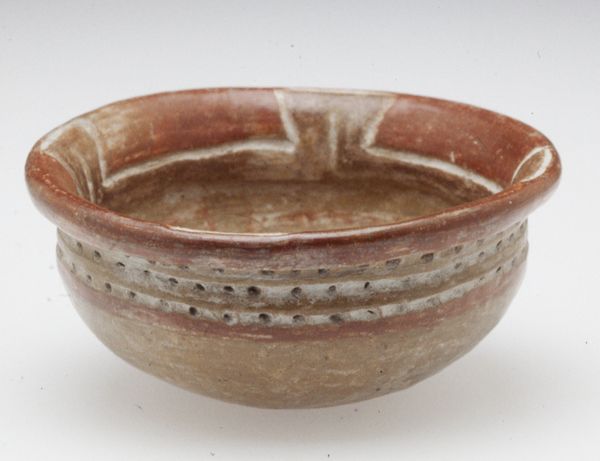
pigment, ceramic
#
culinary
#
pigment
#
ceramic
#
culinary art
#
appetizing
#
food illustration
#
stoneware
#
wash background
#
china
#
watercolour illustration
#
food photography
#
recipe
#
watercolor
Dimensions: 4 1/4 x 7 5/8 x 6 11/16 in. (10.8 x 19.37 x 16.99 cm)
Copyright: Public Domain
Editor: This is a 16th-century Storage Jar, also called a ‘lei’, from the Xindian culture of China, made of ceramic and pigment. I notice these geometric designs near the top, almost like mountain ranges. How should we interpret a piece like this? Curator: Beyond its obvious function, a piece like this 'lei' speaks volumes about cultural dynamics. We might ask ourselves, what does it mean to create such an elaborate piece for simple storage? What’s communicated through the act of adorning an everyday object? Editor: So it’s less about what it *stores* and more about what it *says*? Curator: Precisely. It becomes a statement about identity and value. Consider the Xindian culture – a society leaving few written records. Isn't it possible objects like this became crucial forms of non-verbal communication? The specific design may denote social status, family lineage, or even ritualistic purposes beyond just storing food. The labor involved in crafting such an item suggests that preserving goods had social value intertwined with artistry. Editor: I hadn’t considered the visual language itself. I wonder what resources would have been available at that time that impacted their craftsmanship, design process and cultural impact on surrounding communities and trade. Curator: Absolutely! Analyzing available materials and the trade networks can open an interesting debate surrounding sustainability, social class and identity formation during that historical period. Food security and sustainable practices probably intersected, affecting gendered roles around farming or artisan craft-making. Editor: So we’re not just looking at a storage jar, but a vessel filled with social meaning and historical narratives! I see now how much a single piece can tell us. Curator: Exactly. The beauty of art lies in its ability to be a historical document and mirror reflecting the socio-cultural nuances of the time.
Comments
No comments
Be the first to comment and join the conversation on the ultimate creative platform.
